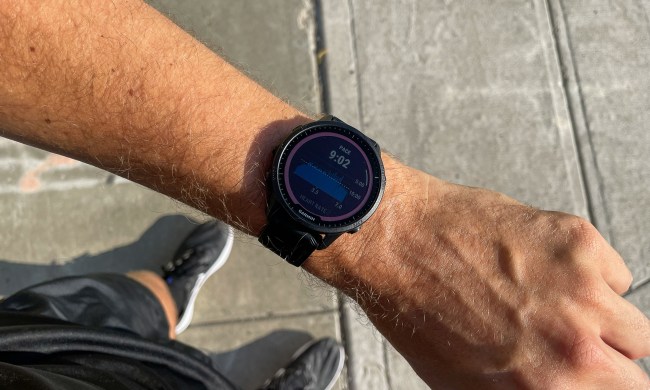As COVID-19 cases continue to spike across the United States, search interest in the virus and terms surrounding it has faded considerably. And while health and search experts say they don’t believe there’s a direct line between the two statistics, they acknowledge that declining interest online is certainly reflective of a larger societal problem.
To be clear, search interest in the coronavirus has hardly vanished. It topped news, music, and sports on Google on July 4, though it has regularly been outpaced by requests for weather reports since May. But compare the current numbers to what they were in March and it’s a precipitous drop.
Searches for “symptoms of coronavirus,” for example, hit 68 million in March, according to SEMrush. In June, they were down to less than 5 million, a 93% drop. Interest in “coronavirus prevention” has fallen by 83% in that same time period. And searches for “Coronavirus in California,” where outbreaks are sharply on the rise, have plunged from 1.5 million in March to just 376,300 last month.


Search experts say they expect that downward trajectory to continue.
“We expect to see this downward trend continue until the mid-summer months when a second wave has had enough time to develop fully,” says Olga Andrienko, head of global marketing at SEMrush.
It’s not just Google queries that are dropping. Traffic to some of the most popular coronavirus tracker websites has declined sharply as well. Worldometers.info, for example, which gives regular, easy to read updates on the total number of COVID-19 cases and deaths (along with useful charts), pulled in over a billion monthly users in April, but dropped down to just 460 million by June, according to SimilarWeb. Visits to the Johns Hopkins Coronavirus Resource Center plummeted even more dramatically, going from 91 million in April to less than 31 million in June.
Healthcare experts say the shifting search trends could be the result of a few factors, the biggest of which is the virus has now been around long enough for people to form opinions about it and block out any sources of information that challenge those beliefs.
“At this point, people are pretty much dug into their camp as to where they are looking for information and how they’re digesting information or they’re becoming detached … because of a sense of being overwhelmed by the sheer volume of effort,” says Dr. Oscar Alleyne, an epidemiologist and chief of programs and services for the National Association of County and City Health Officials (NACCHO). “I think there’s some portion of tuning out.”

Another possibility: More and more communities have relaxed stay at home orders and reopened businesses, including bars and restaurants, leading to the false perception that the crisis is over and done. As people engage in these activities, they’re less inclined to learn about the virus. Put another way: People are searching less because they’re no longer locked in the house.
The societal unrest of the last several weeks, since the murder of George Floyd, has shifted the country’s focus and tenor as well, pushing everything (including COVID-19) to the side.
The decline in coronavirus search interest isn’t a recent occurrence, though. It started long before the recent protests.
After the predictable enormous spike in March (following the first U.S. death from the virus on Feb. 29), things began to settle down in mid-April. By May, coronavirus searches were about the same as for the weather on Google.
Queries for coronavirus testing have jumped noticeably since the first of the month, as seen on Google Trends. So has interest in a mutation of the virus. Both of those are likely due to a surge in mentions in newscasts and by experts, especially the latter.

Ironically, when it comes to mutation, people’s fears are misplaced, says Alleyne.
“If it is not mutating then it’s not a real virus,” he says. “People are looking up this whole concept of viral mutations partly because of an innate fear or concern that mutation means things are going to get worse, without understanding that mutations are natural and expected and have been observed. However, the posture is that it should not or, at least at this present moment, may not have an impact on the treatment and the vaccines that are being developed.”
Getting data broken down by state is a bit tricky given Google’s reporting methods. But on July 7, when the weekly trends in daily new reported cases were highest in Florida, Texas, Arizona, and South Carolina, the biggest search interest came from Idaho and Montana, which have seen big percentage increases in the past seven days, but a smaller number of actual cases than many other states. (Arizona was third, Florida fifth. Texas ranked 22nd, while South Carolina was 39th in the U.S.)

Google, in its search results, cautions “Search data is an indication of curiosity in the subject. It should not be considered an indication of actual cases.”
Whether the search results are indicative of the public’s interest in the coronavirus or not, the nation is definitely bifurcated about the pandemic. Health has been politicized, further splitting citizens, many of whom now define themselves by their beliefs.
And ultimately, that worries the healthcare community as much as COVID-19 does.
“I’m seeing lines in the stand that are drawn that are very distinctive camps,” says Alleyne. “There’s this almost wanton lust to say ‘to hell with this. I don’t want to hear it. I’m done. I’ve canceled the pandemic and I’m just going to go on with my life’. … The second side, of course, has concerns, has been looking at the science, and recognize they want to follow the rules and the guidance. … It’s like polar opposites. The noise of the ‘opposition’ seems to be winning, [but] the disease doesn’t care. It’s just going to continue to wreak havoc in our lives.”



